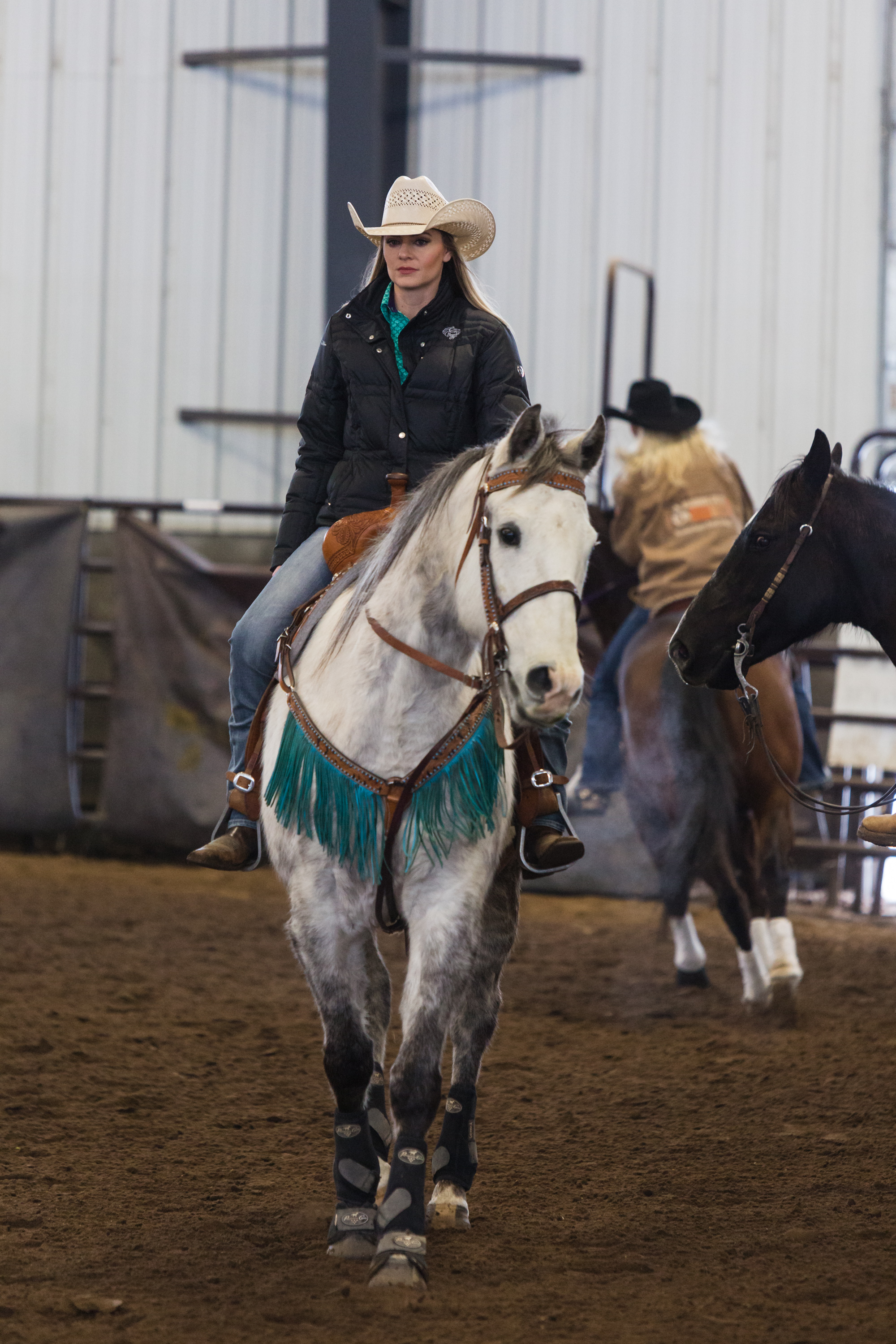Legging Up After Winter Break
After being mostly laid off all winter or coming back from an injury, there is an art to legging up your horse again and working the rust off their mind and body. After months of cold weather, we all start to catch that spring fever. The days get longer, the first thaw hits, and we start chomping at the bit to get in the saddle again. The trick is saddling up again in a way that sets you up for success all season long, instead of rushing things, causing physical strain, or developing bad habits. Bringing them back at a healthy pace not only reinforces training themes, but also helps prevent future injuries.
Horses are like people in many ways. After a month of sitting on the couch eating potato chips, you’d be in no condition to go run a triathlon, at least not without serious discomfort and potential injury. After a long break, horses also need patience, conditioning, and a mental tune- up before competing at their best again.
Here are my recommendations on legging up a horse again after a winter turn out or injury rehab:
I begin and end almost every ride with flexing their head and neck side to side. I apply light pressure with my rein and when their nose touches my boot without tension in the rein, I quickly release the rein and do the same thing on the other side. I do this both ways 2-3 times each direction. Some people will do different stretches with their legs on the ground. These are great if you know what you are doing. If you just wing it, you could create undue stress and strain. I recommend asking your vet or equine chiropractor to show you some recommended stretches to ensure you are doing it correctly.
Start with short, meaningful workouts, twenty minutes max and a lot of long trotting. In their first 10 rides or so after a long break, I will only lope perhaps 3-5 minutes each session. Keep it simple. Don’t ask for fifty different things in each workout. Start by easing them back into their routine physically, then you can begin challenging them mentally. Do this for roughly 10 rides, then slowly dial up the intensity.
Don’t show them the barrel pattern right away. Start with easy drills, maybe 1-2 per session and work up from there. What I call easy drills are ones that don’t have too many elements to them, requiring your horse to think and react quickly. Think of it like reviewing their times tables before asking them to do trigonometry. I believe it is wise to do at least one exhibition run before hauling to a larger competition.
For horses that may have suffered a performance injury, they might also suffer from a loss of confidence. This is extremely common. They may remember that it was in a run where they got hurt and associate a run with pain. Some horses will develop new problems that didn’t exist before as a result of this trauma, such as alley issues, refusing turns, etc. Being patient and going at their own pace will help rebuild their confidence and stifle any bad habits that might be developing.
I have found that Stryker doesn’t love loping 500 circles in a small arena. The only time I ever lope him for more than 7 minutes at a time is if we are working out on a track and he has lots of room to move out or on a trail ride. His mind and body just weren’t built for repetitive loping circles. In the arena, we do a lot of long trotting, bending, flexing, pushing his hip and shoulders around, and disengaging every body part. This may not work for every horse, but it does a lot to keep Stryker in peak physical and mental condition.
Focusing on building a strong, sound body and mind in your 4-legged partner after time off will earn you a lot of victory laps down the road. Good luck this season, happy trails, and saddle up!

